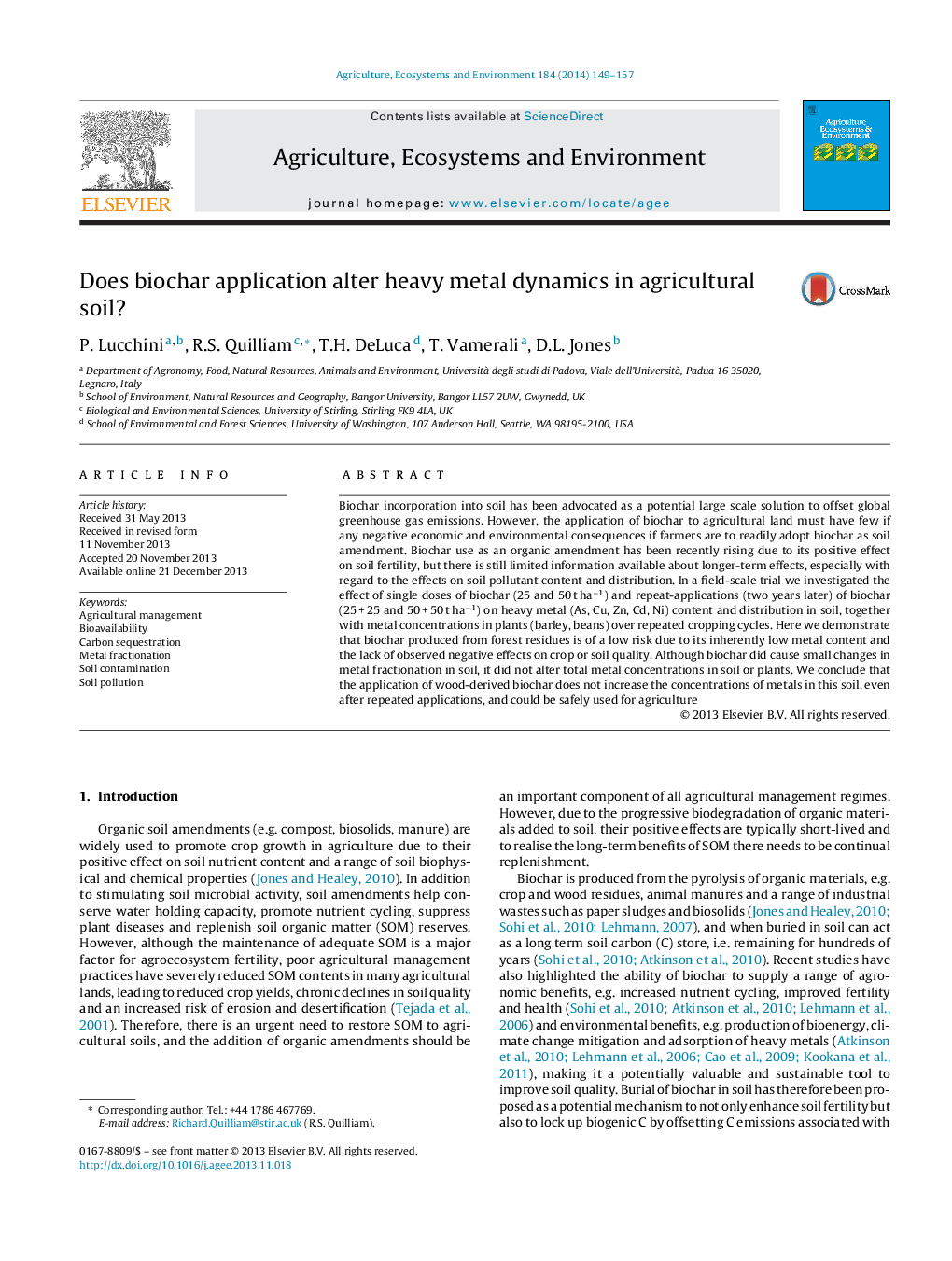| Article ID | Journal | Published Year | Pages | File Type |
|---|---|---|---|---|
| 8487968 | Agriculture, Ecosystems & Environment | 2014 | 9 Pages |
Abstract
Biochar incorporation into soil has been advocated as a potential large scale solution to offset global greenhouse gas emissions. However, the application of biochar to agricultural land must have few if any negative economic and environmental consequences if farmers are to readily adopt biochar as soil amendment. Biochar use as an organic amendment has been recently rising due to its positive effect on soil fertility, but there is still limited information available about longer-term effects, especially with regard to the effects on soil pollutant content and distribution. In a field-scale trial we investigated the effect of single doses of biochar (25 and 50 t haâ1) and repeat-applications (two years later) of biochar (25 + 25 and 50 + 50 t haâ1) on heavy metal (As, Cu, Zn, Cd, Ni) content and distribution in soil, together with metal concentrations in plants (barley, beans) over repeated cropping cycles. Here we demonstrate that biochar produced from forest residues is of a low risk due to its inherently low metal content and the lack of observed negative effects on crop or soil quality. Although biochar did cause small changes in metal fractionation in soil, it did not alter total metal concentrations in soil or plants. We conclude that the application of wood-derived biochar does not increase the concentrations of metals in this soil, even after repeated applications, and could be safely used for agriculture
Keywords
Related Topics
Life Sciences
Agricultural and Biological Sciences
Agronomy and Crop Science
Authors
P. Lucchini, R.S. Quilliam, T.H. DeLuca, T. Vamerali, D.L. Jones,
